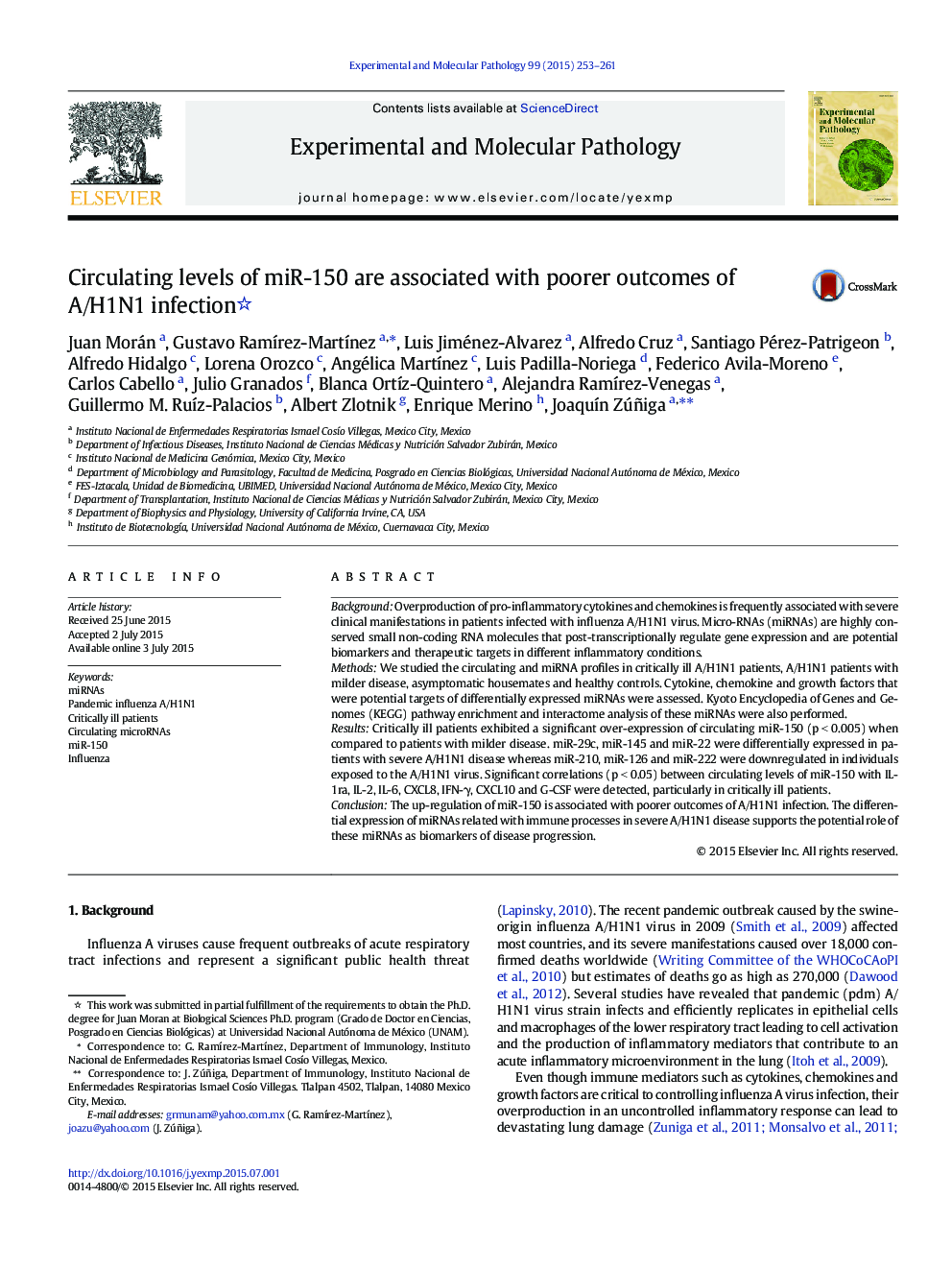| Article ID | Journal | Published Year | Pages | File Type |
|---|---|---|---|---|
| 2775020 | Experimental and Molecular Pathology | 2015 | 9 Pages |
BackgroundOverproduction of pro-inflammatory cytokines and chemokines is frequently associated with severe clinical manifestations in patients infected with influenza A/H1N1 virus. Micro-RNAs (miRNAs) are highly conserved small non-coding RNA molecules that post-transcriptionally regulate gene expression and are potential biomarkers and therapeutic targets in different inflammatory conditions.MethodsWe studied the circulating and miRNA profiles in critically ill A/H1N1 patients, A/H1N1 patients with milder disease, asymptomatic housemates and healthy controls. Cytokine, chemokine and growth factors that were potential targets of differentially expressed miRNAs were assessed. Kyoto Encyclopedia of Genes and Genomes (KEGG) pathway enrichment and interactome analysis of these miRNAs were also performed.ResultsCritically ill patients exhibited a significant over-expression of circulating miR-150 (p < 0.005) when compared to patients with milder disease. miR-29c, miR-145 and miR-22 were differentially expressed in patients with severe A/H1N1 disease whereas miR-210, miR-126 and miR-222 were downregulated in individuals exposed to the A/H1N1 virus. Significant correlations (p < 0.05) between circulating levels of miR-150 with IL-1ra, IL-2, IL-6, CXCL8, IFN-γ, CXCL10 and G-CSF were detected, particularly in critically ill patients.ConclusionThe up-regulation of miR-150 is associated with poorer outcomes of A/H1N1 infection. The differential expression of miRNAs related with immune processes in severe A/H1N1 disease supports the potential role of these miRNAs as biomarkers of disease progression.
